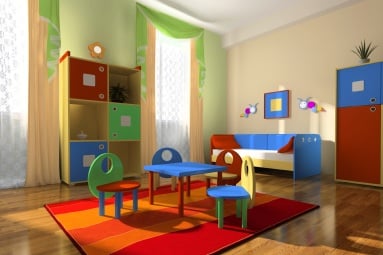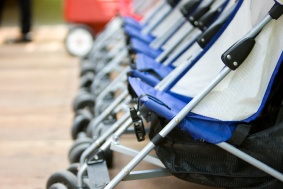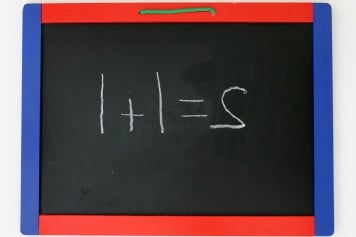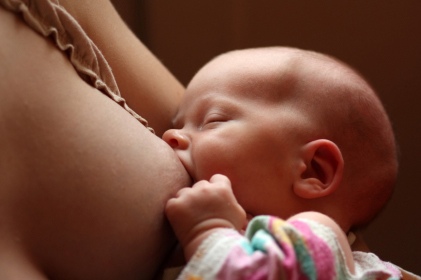In their thought-provoking book, ‘UNESCO Sourcebook for Science in the Primary School: a Workshop Approach to Teacher Education’, Wynne Harlen and Jos Elstgeest provide a means of self-evaluation which teachers can use at those points when they ask themselves ‘how good a job am I doing?’
They present three check-lists relating to children’s activities, their way of engaging with the activities, and the teacher’s actions and interaction with the children. Some excerpts from the chapter, ‘Evaluating learning opportunities in science for all pupils’
One of the concerns of teachers must be to ensure that as far as possible all children benefit from the learning activities which the classroom provides.
Generally there will be some children who are clearly benefiting and this is satisfying for them and for the teacher. But are all children gaining as much as they could from the science activities?
In particular, are the girls as active, and questioning as the boys? Are there children who avoid certain kinds of activity, for cultural or religious reasons? What about children whose first language is not the classroom? What about those with learning difficulties?
…Teachers can be helped by being aware of some of the known problem areas. Girls commonly under-achieve in science, particularly physical science, because of the male domination of the subject and the tendency to cater for boys’ interests in the kinds of activities provided.
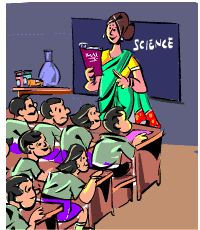
Checklists of Children’s Science Activities [Published by National Book Trust, India, with UNESCO publishing]
Children with language difficulties can be helped by providing a greater range of practical experiences so that they understand directly the meaning of words and develop an appropriate vocabulary more rapidly than through the usual mixture of practical activity and discussion.
Children with learning difficulties require tasks structured and paced according to their needs. They can be given access to scientific ideas and skills at levels which are satisfying to then and help in their understanding of the world around.
The process of evaluation
Evaluation is the process of gathering information and making some judgements or decisions about it. In order to make the judgements or decisions, there have to be some standards or criteria with which the information is compared.
So, for example, in deciding whether a car is roadworthy, there is a check-list of information which has to be gathered about its condition and performance, and there are criteria for deciding whether it reaches the standard required.
Evaluation is not as clear-cut as this example may imply. We only have to think of evaluating things such as the performance of actors, or books or pieces of music, to realise that the ‘value’ which the word contains plays an important part in the process.
So it is necessary to guard against thinking that an evaluation has any absolute meaning; it is always dependent on the criteria used. It is, for instance, quite possible for a lesson to be judged successful if one set of criteria is used (perhaps about how clearly the teacher presented information to the class) but less so if a different set is used (perhaps about how active the pupils were in learning).
This does not mean that evaluation is not useful; it simply means that we should be clear about the basis on which any judgement or decision is made.
The process of gathering information about teaching and considering it against criteria which reflect our values and objectives should be a central concern of teachers. It is, certainly essential if improvements are to be made and the whole point is, of course, to make improvements, not simply to pass judgements.
Thus the criteria used will reflect this purpose and the result of the evaluation will be that some action is taken to improve future teaching.
Given this purpose and the crucial part which the criteria play in it, the best way of evaluating aspects of teaching is for teachers themselves to draw up a list of what they consider to be the ‘idea’ characteristics. If there is the chance to do this, in a group with others, it is done before reading the lists below.
Evaluating activities
Whether or not you have drawn up your own list, it is useful to consider what others have suggested as criteria for evaluating activities. The following list, which has originated in the work of teachers, will be of interest in this context, but should not be taken as having more weight than teachers’ own lists. Its use is in reviewing activities which have been carried out and those which are planned.
Using the criteria
In this case the criteria are expressed as questions which are asked about each activity. They can be applied to actual events, in activities in progress, or in thinking through possible activities in planning.
Does the activity:
- Give the opportunity for children to apply and develop their ideas about scientific concepts?
- Give the opportunity for children to use and develop science process skills?
- Encourage scientific attitudes?
- Engage the interests of the children and relate to their everyday experience?
- Appeal equally to boys and girls and to those of all cultural and religious backgrounds?
- Provide experience of learning through interaction with things around?
- Involve the use of simple and safe equipment and materials which are familiar to the children?
- Involve resources which are readily available and strategies accessible to the teacher?
- Involve children in working co-operatively and in combining their ideas? Taking action
Clearly it is intended that the answers should be ‘yes’ to as many as possible of these questions may not be relevant. That will not happen for every activity and, for some, certain question may not be relevant. However, where there are persistent, negative judgements it is time to look more critically at the activities.
Evaluating children’s engagement with activities
The concern here is with the interaction of children with the activities. What we are looking for here, however, is whether the children are engaging in the experiences and doing the things which give them an opportunity to develop their ideas, skills and attitudes. Again, this list is an example for teachers to compare with what they might produce for themselves.
Using the criteria
For this purpose, the questions are asked of activities which have already taken place, over a period of time (perhaps a week of two). The idea is to reflect on whether each of these has been noticed. The answer ‘yes’ should only be accepted if there are specific examples to substantiate it.
Did the children:
- Handle materials and show by action or words that they had made observations about them?
- Talk to each other in small groups about the things they were observing or investigating?
- Ask questions which led to investigations?
- Ask questions which indicated their interest in the way they were working or what they were finding out?
- Talk freely to the teacher about what they found and what they thought about it?
- Display their work and explain it to others?
- Suggest ways of testing their ideas?
- Discuss the meaning of words they or the teacher were using?
- Consider a different view from their own and assess it on the basis of sound argument or evidence?
- Carry out an investigation which they had taken part in planning?
- Express justified criticism of the way in which an investigation was carried out?
- Follow any instructions given to them orally or in writing without difficulty?
- Make decisions for themselves about what to do?
- Use equipment effectively and safely?
- Measure something in setting up or finding results from an investigation?
- Make a prediction based on their own ideas or findings?
- Link observations in one situation to a relevant previous experience?
- Show in some way that they were absorbed in their work and that it was important to them?
- Use sources of information to answer factual questions?
Taking action Whilst a ‘yes’ answer to these questions is desirable, there will clearly be situations and constraints which sometimes make such an answer impossible. Teachers will know, for example, whether it was the constraint of space and resources which meant that children did not have a chance to measure or use equipment. However, even in cases where there were constraints, the environment itself provides opportunities for scientific exploration… and those with ingenuity will find such opportunities within the classroom as well.
Many teachers will find that one of the greater obstacles to providing opportunities for ‘yes’ answers to the questions in this list will be class size. The larger the class, the greater the noise of active learning. It just has to be accepted that a class which is busy learning science cannot be a quiet class.
Learning science is not a matter of copying from the board or writing dictated notes or learning from a textbook. It is a matter of investigating, using ideas, sharing ideas, talking to and listening to others, and trying things out.
There will be times which are quiet, when children are reflecting on and writing or drawing about what they have found. But the buzz of activity and discussion in groups in a must at some time.
Management skills are at premium in large classes and science will stretch these skills. However, the teacher does not need to be in all places at once if:
(a) the children know what they are doing (this doesn’t mean that they are not thinking for themselves; their task can be to come up with ideas, with questions, with plans for an investigation, to report to others);
(b) activity has been structured so that the group members have well-defined roles; and
(c) routines are established in relation to collecting and replacing equipment.
If group work is regularly preceded and followed by whole-class discussion, with reports from groups, then children will take seriously the accomplishment of their group tasks.
With very large classes, more time may have to be spent in whole-class discussions, but there must be group work to provide first-hand experience to feed this discussion.
The second massive obstacle to working in a way which meets these criteria, is time. Commonly there is resistance in practice to process-based active learning because of the type of syllabus which teachers have to cover.
Typically such syllabuses comprise a long list of specific content which children have to know. Teachers feel that they have to ensure that children know each element of this list and this is difficult because the very weight of the syllabus means that there is no chance for understanding. Thus the purpose of the syllabus is defeated by its character.
A review of these syllabuses generally shows that there is potential for accomplishing their real intentions in a way which is not as self-defeating as the existing form. They can be reorganised into far fewer items which identify the key concepts which it is important to learn with understanding because they apply to life.
By contrast, many of the multitude of separate facts which are listed have no relationship to the children’s environment. Nothing is lost in this reorganisation, but much is gained in freeing the teacher to spend much more time on the important, generally applicable ideas.
Although this adjustment is not something which individual teachers can do for themselves, they may help national curriculum centers and professional association to take action.
Evaluating the teacher’s actions and interactions with the children.
The third list applies to the teacher’s thinking and behaviour. Considering the activities in the same period of time as for the second list, teachers should ask themselves whether they have:
- Provided opportunity for children to explore/play/interact informally with materials?
- Encouraged children to ask questions?
- Asked the children open questions which invited them to talk about their ideas?
- Responded to questions by suggesting what the children might do to find out rather than providing a direct answer?
- Provided sources of information suitable for helping the children to find out more about a topic?
- Provided structured group tasks so that the children knew what they were to do?
- Asked for writing, drawing or other products in which the children expressed their ideas about why something happened or behaved in a certain way?
- Provided an opportunity for children to present ideas or to describe their investigations to others?
- Notices children working well without help?
- Kept silent and listened to the children talking?
- Been aware of the children’s ideas about the materials, objects and events being studied?
- Become aware of changes in children’s ideas from ones previously held?
- Made interpretations of the children’s written or other products in terms of their ideas and skills?
- Kept records of the children’s experience?
- Assessed and kept records of the ideas and skills shown by the children?
- Used the records of children’s experiences and progress in planning further activities?
- Talked to the children about the progress they are making in their learning?
Considered and guarded against bias in activities which may disadvantage children on account of their gender, ethnic origin, religion, language or physical disability?The questions in this list are perhaps the most value-based of the three lists given here. They imply a role for the teacher in learning which is quite different from the traditional role as source of information.This role is consistent with the kind of learning which is the message of this book. We have to prepare our children for a rapidly changing world where they need not only to be able to apply present knowledge to new circumstances but to know how to extend their knowledge.
Our children, therefore, need learning with understanding, which by definition is learning which can be applied appropriately and imaginatively.
Children learn with understanding when they take part in thinking things out for themselves and have ownership of their learning. A teacher cannot give children this learning by direct transmission, but the teaching role is none the less central, active and guiding.
It requires teachers to reveal the ideas and skills children already have and to take these as the starting-points in active learning. The teacher has to help children to develop the process skills…which will enable them to explore their environment and test out ideas (their own and those of others) so they develop more sophisticated and useful concepts and skills.
Part of the teacher’s role is to monitor children’s progress and to take action where difficulties are being encountered and where challenges are too small.
Teachers know what learning they wish to bring about, but the children are the only ones who can do the learning. They must remain in control so that the learning is truly their learning, and the skills and ideas which they develop are ones they will use in their daily lives.
A habit of self-evaluation, such as might develop in the regular use of criteria of the kind proposed here, will help teachers to reflect on their role in children’s learning. It is particularly appropriate in the teaching of science, constituting a scientific approach to the constant seeking for better ways of teaching.
Using these criteria will also help us to remember, in a shrinking world, that science is international and its development in the past has depended upon contributions from many different cultures, and it will do so in the future.
In our teaching, and particularly in the written materials we provide, we should reflect these contributions and avoid giving the impression that science is the preserve of certain types of culture.





